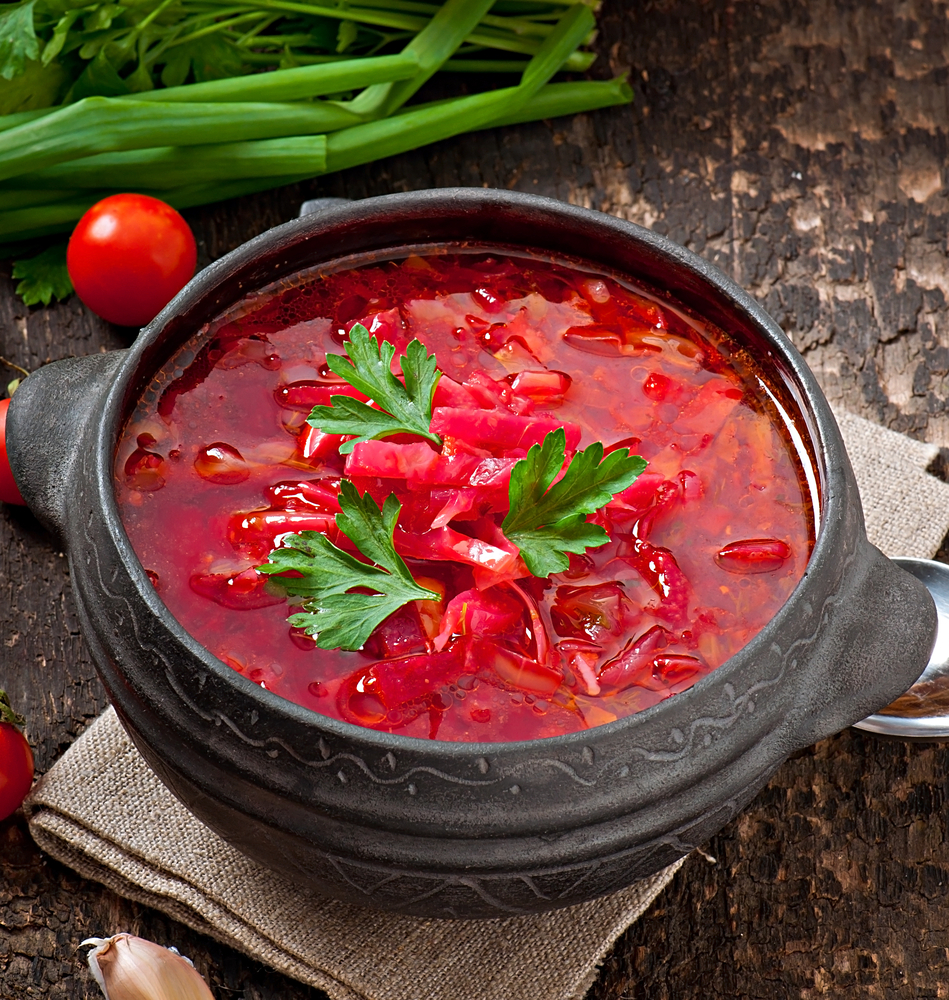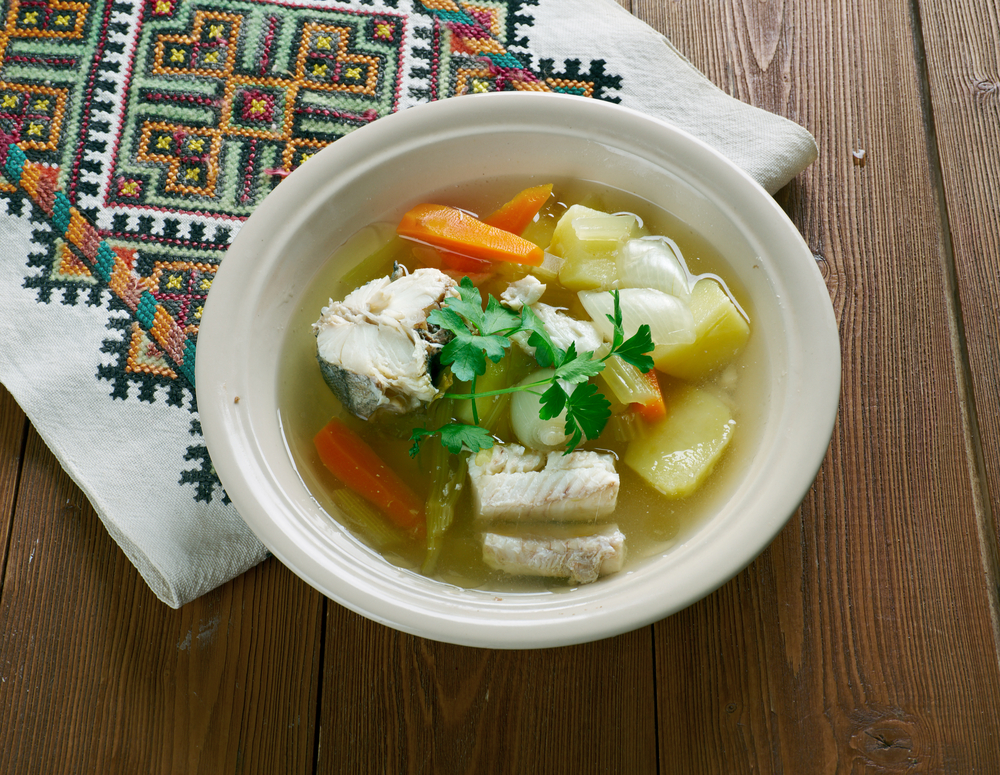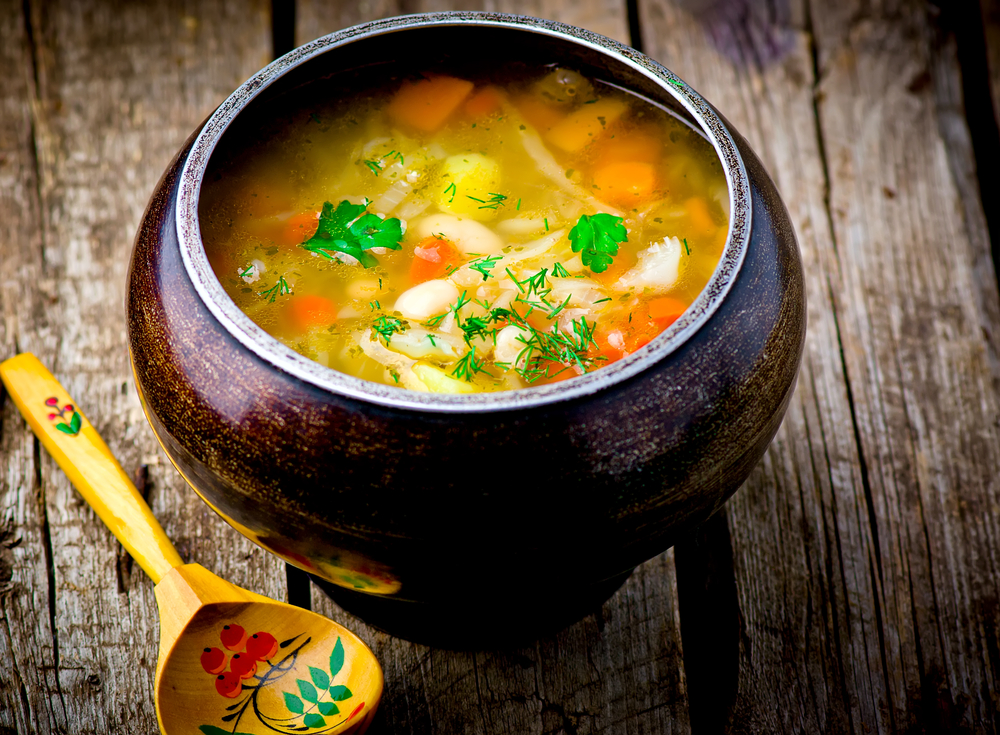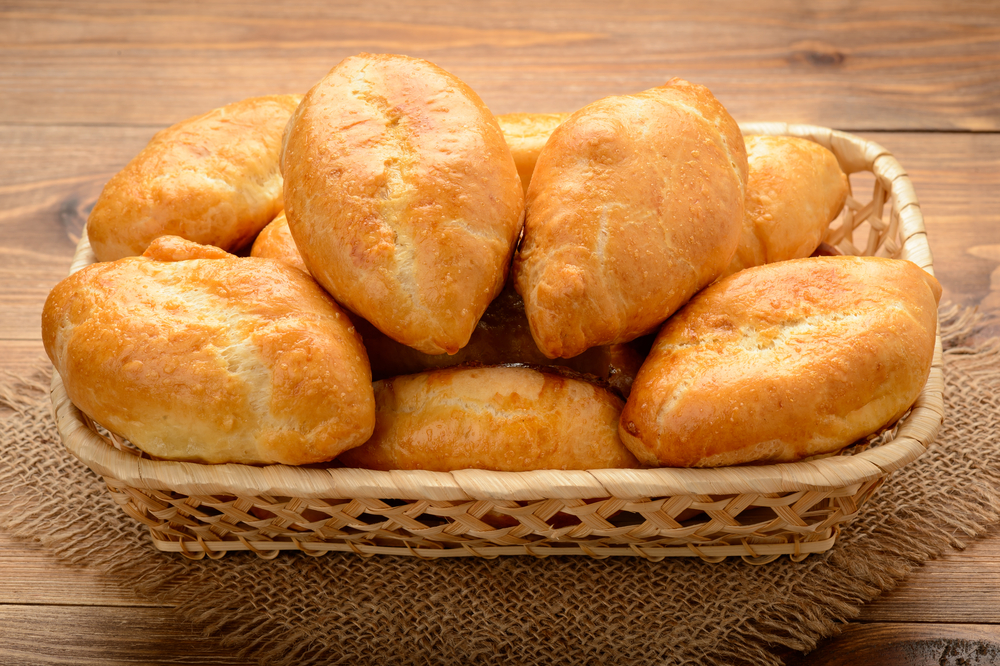Russian Food
Russian cuisine is one of the most authentic in the world. It has been formed under the influence of severe climate and abundant national traditions. This cuisine was born not under the palace vaults, but in houses of common modest people who had to feed large families. This is why traditional Russian dishes are nourishing and cooked of the cheapest and available ingredients. Nevertheless, this cuisine cannot be called poor and unvaried as its gustatory combinations can astonish even the most demanding gourmand.
The Four Pillars of the Russian Cuisine
Vegetables. Abundance of vegetables is one of the distinctive features of the Russian cuisine. Vegetables were pickled and preserved otherwise to supply vitamins for long winters. Cheap, easy to grow and able to be stored for a long time varieties was preferred, such as onion, cabbage, carrot, turnips, and radish. Russians also liked potatoes brought by Peter I at the beginning of the 18th century. Vegetables make the base of rich and nourishing soups, spicy appetizers and are amply added into meat and poultry dishes.
Fish. Russian rivers and lakes have always been rich in fish (perch, roach, pike, ruff, sturgeon), that is why it has an important place in the menu. Besides fish was caught in the winter season as well (the famous “subglacial fishing”), and rich and nourishing fish dishes could be served all year round. Those include soups, roasted and stewed dishes as well as baked food.
Baked Foods. “Bread is the staff of life”, says an old Russian proverb. No meal either at a rich or a poor house can do without bread. There are many kinds of bread with considerably different flavors. However, Russian people have baked, not only bread: Russian cuisine is full of appetizing recipes of baked and roasted dishes of dough. What can be more nourishing and tastier during a long and cold winter? Baked food has always been a distinctive feature of Russian holiday feasts and accompanied many religious and ritual celebrations. Pan fried blini and oladi, famous pies with dozens of various fillings — every housewife has her personal signature recipe.
Cereals. Grains in Russia were used not only for making bread. People have liked to process grains and eat them. Hot and rich Russian porridges are made of a variety of cereals (barley, wheat, buckwheat, semolina), each of which has its own unique taste. Porridge becomes even tastier with various additives: berries, mushrooms or stewed meat or chicken, and roasted onions.
Traditional Russian Dishes
Blini (pancakes). Thin roasted scones of plain dough made from flour, eggs and milk are one of the most beloved by Russian people’s dishes. A bit sweet or meagre, golden brown, hot and well-oiled, they are an essential attribute of any holiday. Blini are always served with various additives — from rich (e.g. Meat, salted fish, caviar) to sweet ones (e.g. Berries, honey, jam), so they can be either a main dish or a dessert. In the second half of February or early March Russian people celebrate Maslenita — a holiday when blini are cooked at every home. Making blini very thin, even and lacy is a matter of honor for every Russian housewife.

Oladi is another dish from dough cooked in a frying pan. Oladi is similar to blini, but they are thicker and have porous structure. They are served with Smetana (sour cream).
Borsch. This is a soup based on beet-root and cabbage with pulpy pieces of vegetables that has nice vinous colour and sweet and savory vegetable taste. Borsch is a dish that exists in many varieties: it can be nourishing, with pieces of meat or very light, based on vegetables only. Depending on the region of Russia borsch is cooked with tomatoes, sometimes mushrooms or even apples.

Shchi. It is a light transparent soup of boiled cabbage with pieces of vegetables. It is a very light and useful dish for all seasons. In spring it is cooked with new cabbage and has fresh and delicate flavor. The winter dish is the so-called “sour shchi” based on pickled cabbage. Sour shchi has very bright and nice pickle flavor. However the smell of sour shchi is not very pleasant (due to pickled cabbage) but real gourmands simply disregard it.
Pirogi or pirozhki are baked food with various fillings. It is difficult to find a more diverse dish of the Russian cuisine! Pirozhki can be filled with meat, chicken, fish or mushrooms, boiled eggs, vegetables, fruits, berries or jam. The contrast of golden brown dough and delicate hot filling inside is very tasteful. Pirozhki is very popular “fast food”, they are often taken by people going on a long journey. Cooking of pirozhki at home is a real fun for the whole family, as even a child can easily make them. The most pleasant and unusual taste belongs to pies with mushroom (or potato and mushroom), apple or cherry filling.
Ukha is a transparent soup made from fresh fish, potatoes and carrots. Ukha is cooked from various kinds of fishes, mainly white ones. The sterlet ukha is a speciality, but ukha made from small river fishes is also very tasty (folks especially like ruffe ukha). Instead of bread ukha is often served with a traditional fish pie called rasstegai.

Buckwheat porridge is a nourishing dish from boiled buckwheat grains that has been anciently beloved by Russian people. Its taste and appearance resemble brown rice. The classical buckwheat dish is crumby, it shall be boiled so that all the grains keep apart. Quite often buckwheat is cooked with meat or other (usually not sweet) ingredients to make its mild taste more piquant. One of the popular dishes called “Grechka po-kupecheski” (Merchant-Style Buckwheat) is cooked with roasted mushrooms and onions.
Pickled products have been part of the traditional Russian cuisine since ancient times as they gave the opportunity to add vegetables to the diet during the long winter. Especially popular are pickled cucumbers because they stay as crunchy as fresh ones, but get savory salt and sweet taste. Common people also like sauerkraut made of chopped and pickled cabbage leaves. After pickling they become crunchy and semi-transparent. The taste of sauerkraut varies from sour to sweet and sour, it is a great appetizer and a freshening side dish. Pickled mushrooms are a haute Russian specialty. Milk mushrooms (Lactarius resimus and Lactarius turpis) have an especially delicate taste and elastic body. They are pickled and served with onions or mashed potatoes. Brines for pickling are made with various herbs and spices able to add new interesting tints to dishes.
Pelmeni. Their recipe was brought to Russia from China but has been considerably changed under the influence of Russian culinary tradition. Dough for Russian pelmeni is made of wheat flour and is rather hard. The filling is minced meat. Pelmeni are most often boiled, sometimes roasted and served with Smetana. Pelmeni is a very substantial dish, so it is better to eat them separately.
Stroganina is a dish of the Russian North cuisine. It is really thin slices of frozen fish or meat that are dipped into a mixture of salt and pepper. Stroganina is a very unusual crispy appetizer.
Okroshka is freshening cold soup with pieces of fresh vegetables. Okroshka is made with traditional Russian beverages — kvass or kefir. It is a very tasty and light summer dish that feels good in hot weather. Usually okroshka is served with Smetana.

Russian Drinks
Kvass is a traditional summer beverage made of rye bread or flour and malt. Kvass has rye, sour, and freshening taste. It perfectly quenches thirst, but may seem too poignant to some people. In summer time you can find iron barrels, selling cold kvass in the streets of Russian cities. However, when eating at a restaurant it is advisable to order kvass made in wooden barrels. Kvass contains a bit of alcohol (up to 3%), that is why it is not recommended to drink it before driving!
Medovukha is a light honey based alcoholic drink with added grasses and berries. Medovukha is served hot and consumed slowly. It usually has a pleasant sweet taste.
Sbiten is a drink similar to medovukha but having less distinct sweet taste. Sbiten is often cooked with various herbs and serves a perfect prevention against colds. To some extent it resembles herbal tea with honey.
Mors is a drink based on water diluted berry juice (the most popular kind is cranberry mors). Usually it has nice red or ruby color and fresh, slightly acid taste. The history of mors counts several centuries. Cold mors perfectly quenches thirst and helps to clean taste receptors.
Russian exotic — the most authentic dishes and drinks
Borodinsky bread is made of rye flour. It has dark brown color, nice piquant flavor and thick body. Its taste is difficult to describe: it is spicy, sweet and sour with a tint of fermentation. Borodinsky bread is covered with spices, usually coriander seeds. Brown bread perfectly complements most dishes of the Russian cuisine. It is very tasty when cut into thin pieces and slightly dredged with salt.

Kholodets. This dish is probably for the bravest and persistent followers of the Russian cuisine. It is cold jelly made of rich bone broth with pieces of meat and vegetables. Kholodets is dressed with cold sauce of grated horseradish. Kholodets has an impressive look — through transparent jellied broth one can see nice circles of carrots and potatoes. However, this dish is far from being popular even among Russians.
Kefir. A drink made by fermented milk having thick consistence and unique sour and creamy taste. The closest analogue is natural yoghurt. Kefir appeases hunger, perfectly refreshes in hot weather, and is very useful for digestion. However, many people who try it for the first time point out that its taste is unusual.
Vodka. This is one of the most popular among foreigners, Russian words and the main strong national drink in Russia. When choosing vodka it is better to give preference to well-distilled spirit. Pickled products and brown bread are traditional vodka chasers.
What is the right way of drinking vodka?
According to the Russian tradition a shot of cold vodka should be drunk at a gulp, then smell a piece of dark bread and only after that have a bite.
To some people Russian cuisine may seem too exotic; however, those who are open to new tastes would like it. First of all, this is home and not restaurant cuisine, so if you get a chance to try Russian dishes made by not a professional cook but a housewife do not miss it! However, one should take into account that a table fully covered with dishes is the standard of Russian hospitality.